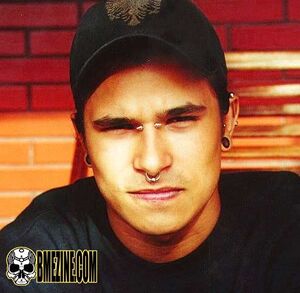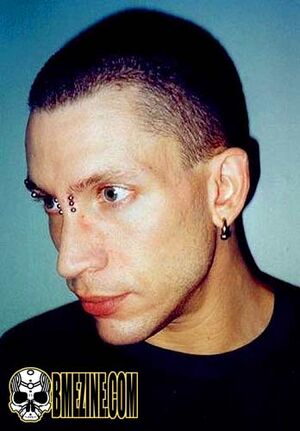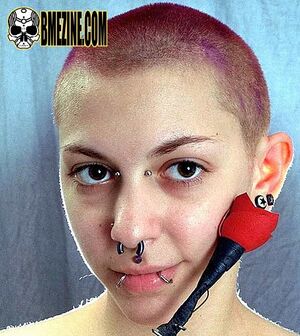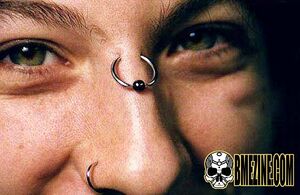Bridge Piercing
A bridge piercing passes horizontally through the fleshy part between the eyes above or at nose level (a vertical bridge piercing is a surface piercing and technically quite different). The piercing is best done with a straight, curved (this will sit crookedly unless it's a flush fit), or staple barbell, unless it's being done shallower to allow the wearing of a smaller ring. When switching to a ring, be sure it's well healed and it's a D-ring or at least allows comfortable moving. Otherwise it may start migrating or scarring, particularly those done closer to the bone (there's nowhere for the ring to move but forward). They are usually done in 14 or 12 gauge. Special consideration: If you do not have somewhat loose skin here, you stand to have extended healing, migration and consequent scarring. Worse, it may heal crooked with it being too deep or shallow on one or both sides. Choose an experienced piercer for this one. Placement can be very difficult; depending on the face (every face is a collection of misalignments); the "correct" markings may end up pointing out misalignment rather than better averaging it.
Alternative Names
- Erl
- coined by Dan Kopka of Gauntlet in 1989 after performing the piercing on Erl Van Aken.
- Niebuhr
- used in parts of Europe.






